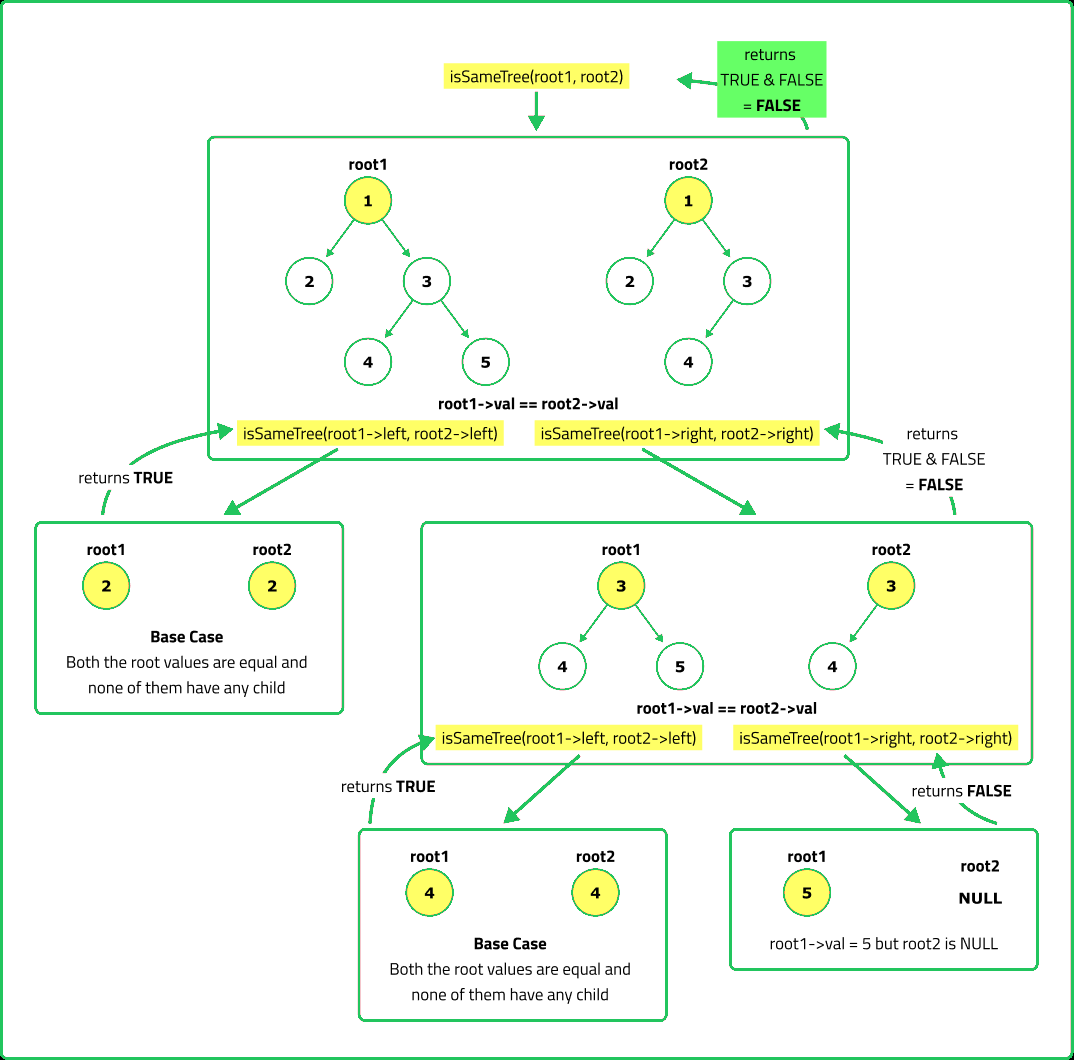Check if two trees are identical or not
Binary Trees
Medium Problems
Medium
- Fun Fact: The given problem is fundamentally used in various applications such as code compilers and database systems where we need to compare two Abstract Syntax Trees (ASTs)
- It's also used in code similarity checkers and plagiarism detection software where they need to analyze if two codes perform the same operations
- In Data Science and ML applications, this concept is helpful in measuring the similarities between decision trees
Given the roots of two binary trees p and q, write a function to check if they are the same or not.
Two binary trees are considered the same if they are structurally identical, and the nodes have the same value.
Examples:
Input : p = [1, 2, 3] , q = [1, 2, 3]
Output : true
Explanation : Both trees images are shown below
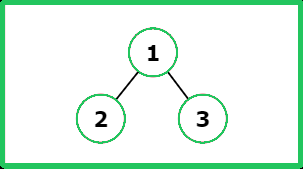
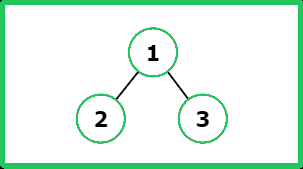
Input : p = [1, 2, 1] , q = [1, 1, 2]
Output : false
Explanation : Both trees images are shown below
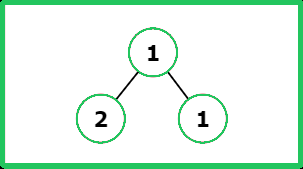
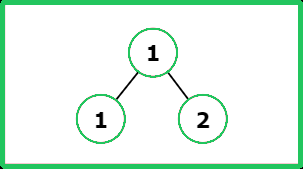
Input : p = [5, 1, 2, 8, null, null, 5, null, 4, null, null, 7 ], q = [5, 1, 2, 8, null, null, 4, null, 5, null, null, 7 ]
Constraints
- 1 <= Number of Nodes <= 100
- -104 <= Node.val <= 104
Hints
- An iterative DFS approach can be implemented using a stack to simulate recursion. Each time we pop a node pair (p, q), we compare their values and push their left and right children back onto the stack for further comparison.
Company Tags
Teladoc Health
Deloitte
Wayfair
Siemens Healthineers
Broadcom
Optum
PayPal
Chewy
Rakuten
McKinsey & Company
Activision Blizzard
Rockstar Games
Snowflake
Western Digital
AMD
Swiggy
Epic Games
Etsy
Target
Electronic Arts
DoorDash
NVIDIA
Boston Consulting Group
Robinhood
Riot Games
Google
Microsoft
Amazon
Meta
Apple
Netflix
Adobe
